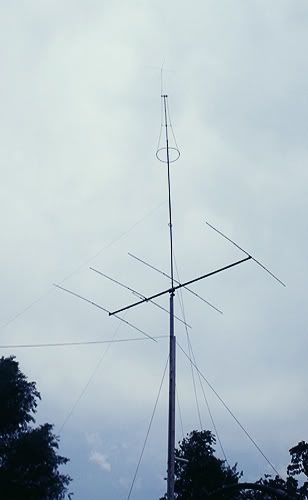Homer I didn't even think about you using a choke on your A/P. Could you give me your choke dimensions, coax, and VF you used.
I will have to do that on my A/P model without isolation, and see if the model still works the same.
Did you also isolate your antenna.
Thanks for letting me know...just using a choke is probably another possibility for Bob too.
Homer, you commented earlier that my model showed an exceptional gain, etc. For some reason I have this model set at 52' feet to the feed point, and that is higher than my other models. I usually model at 9', 18', 32', and 36' feet. So, 52' feet is going to look really good for the models I've made.
I'll have to reset this model to 32' feet...the height I like best.
The reason I like 32' feet is, because I tend to see less CMC on the models...if I add a mast to the model.
And just as a reminder to The DB, we can't see CMC's indicated below an Eznec antenna model...unless we add an extra wire for the current to show-up on the feed line wire.

Bob, just to be clear on Homer using 9' feet below the hoop to place his choke, I used 8.5' feet below the hoop for the isolation point. I'll also have to try that and see if it changes anything...since I think I have the model so nice.

